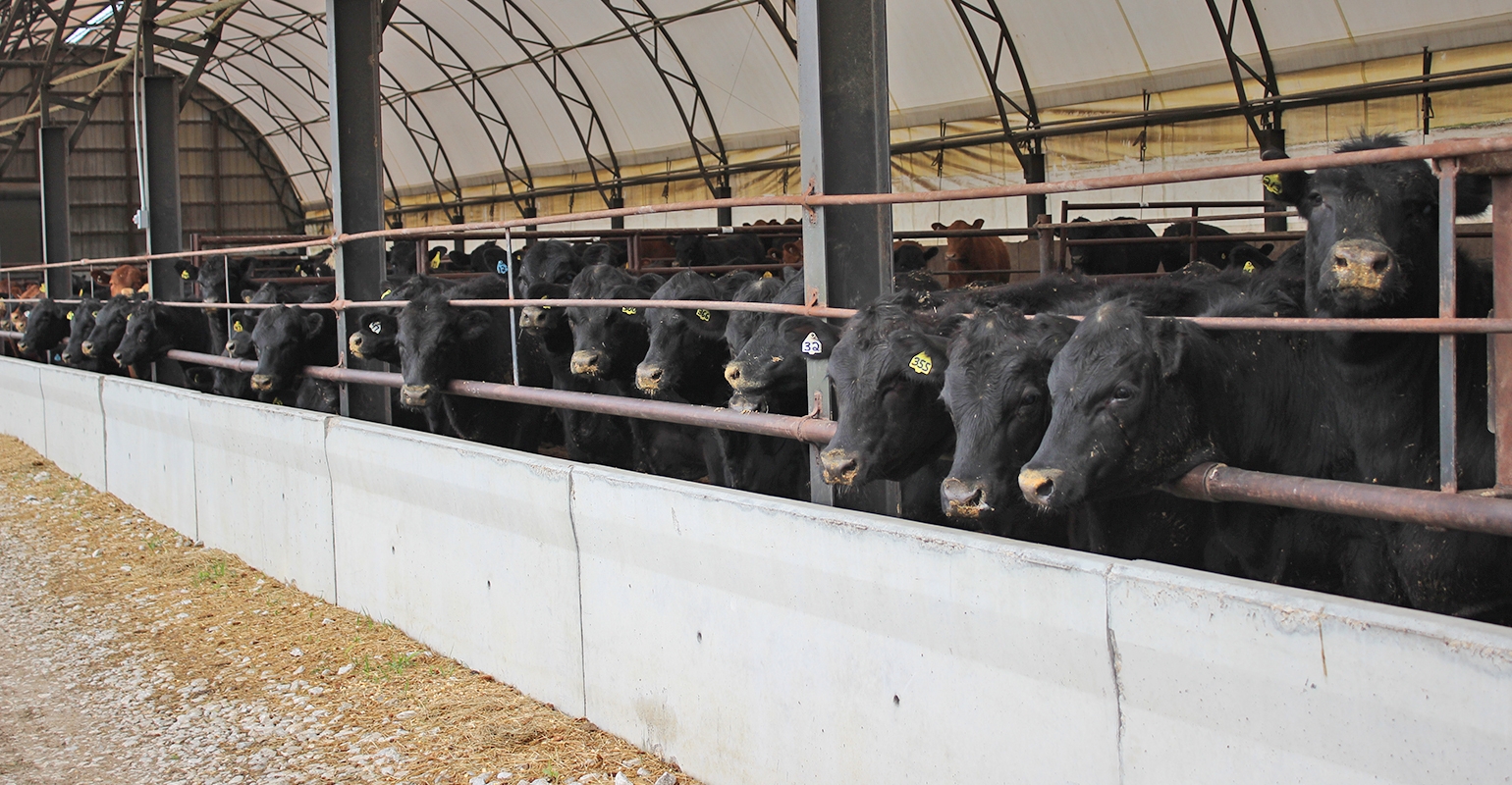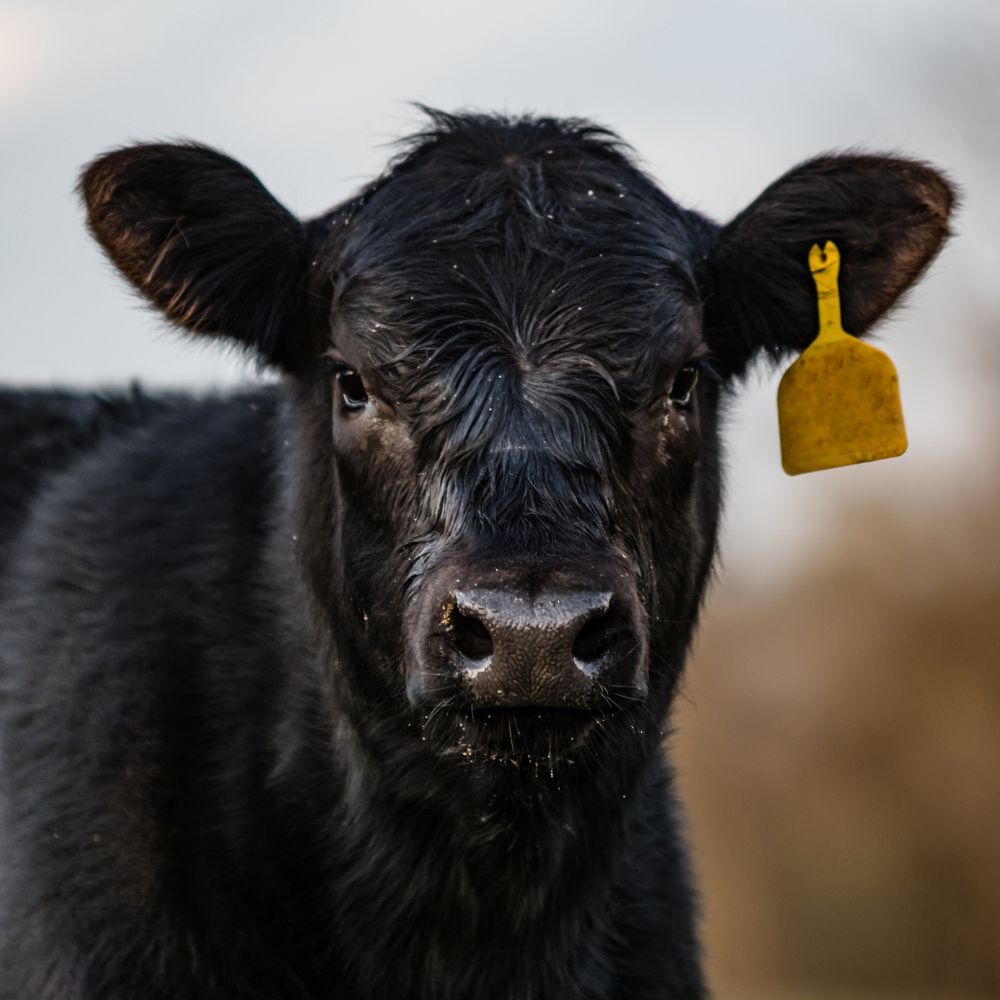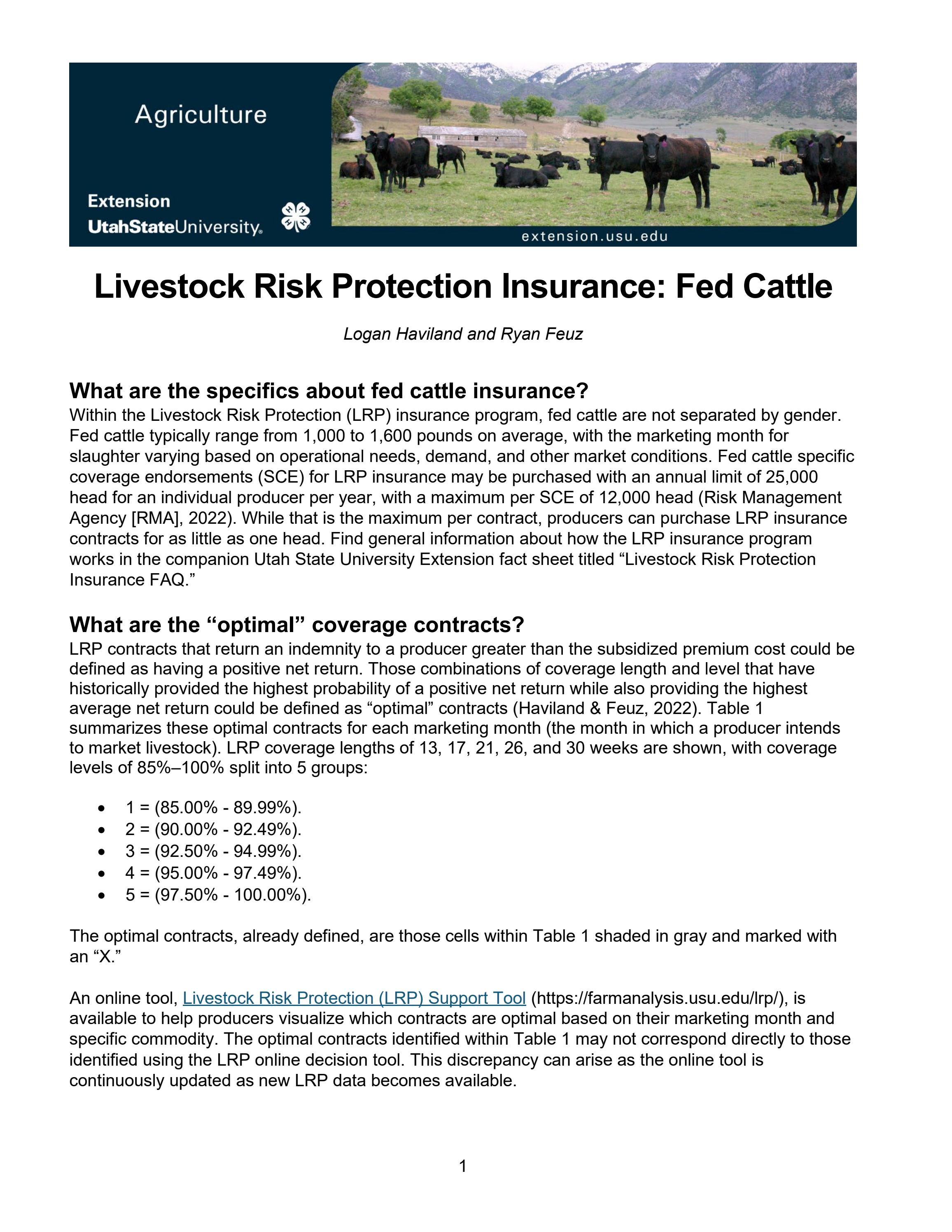Guarding Success: Bagley Risk Management Provider
Guarding Success: Bagley Risk Management Provider
Blog Article
Comprehending Animals Danger Security (LRP) Insurance: A Comprehensive Guide
Browsing the world of animals danger defense (LRP) insurance coverage can be a complex undertaking for numerous in the farming industry. This kind of insurance uses a safeguard versus market fluctuations and unexpected scenarios that could affect animals producers. By comprehending the details of LRP insurance, producers can make enlightened decisions that may guard their operations from monetary dangers. From just how LRP insurance works to the numerous coverage options offered, there is much to discover in this thorough overview that can potentially shape the method livestock manufacturers approach risk management in their services.

How LRP Insurance Policy Works
Occasionally, recognizing the auto mechanics of Livestock Danger Protection (LRP) insurance policy can be complicated, but damaging down how it functions can provide quality for ranchers and farmers. LRP insurance policy is a threat management device developed to secure animals manufacturers against unforeseen cost declines. The plan allows manufacturers to set a coverage degree based on their particular needs, picking the number of head, weight array, and insurance coverage price. Once the plan remains in place, if market rates fall below the insurance coverage price, producers can sue for the distinction. It is necessary to note that LRP insurance coverage is not an earnings guarantee; instead, it focuses only on price danger security. The insurance coverage duration normally varies from 13 to 52 weeks, offering versatility for manufacturers to choose a period that straightens with their production cycle. By using LRP insurance policy, farmers and herdsmans can alleviate the financial threats connected with fluctuating market value, guaranteeing higher stability in their operations.
Qualification and Insurance Coverage Options

When it comes to insurance coverage choices, LRP insurance offers producers the flexibility to pick the protection level, insurance coverage duration, and endorsements that best suit their threat monitoring demands. By comprehending the eligibility criteria and insurance coverage choices offered, livestock manufacturers can make educated decisions to take care of risk successfully.
Advantages And Disadvantages of LRP Insurance Coverage
When examining Livestock Threat Defense (LRP) insurance coverage, it is vital for livestock manufacturers to evaluate the advantages and negative aspects intrinsic in this threat administration tool.

One of the primary advantages of LRP insurance coverage is its ability to provide security against a decrease in livestock prices. In addition, LRP insurance offers a level of flexibility, allowing producers to customize protection levels and policy periods to match their details demands.
One constraint of LRP insurance coverage is that it does not protect versus all kinds of dangers, such as condition break outs or all-natural disasters. It is essential for manufacturers to very carefully assess their specific risk direct exposure and financial scenario to identify if LRP insurance is the ideal risk administration tool for their operation.
Recognizing LRP Insurance Premiums

Tips for Optimizing LRP Advantages
Maximizing the advantages of Animals Danger Security (LRP) insurance policy calls for strategic planning and proactive danger administration - Bagley Risk Management. To make the many of your LRP coverage, consider the following suggestions:
Consistently Assess Market Conditions: Stay informed regarding market fads and cost fluctuations in the animals industry. By keeping track of these variables, you can make informed decisions regarding when to buy LRP protection to secure versus prospective losses.
Set Realistic Coverage Degrees: When picking insurance coverage degrees, consider your production expenses, market value of livestock, and potential threats - Bagley Risk Management. Establishing realistic coverage degrees makes certain that you are properly safeguarded without overpaying for unneeded insurance coverage
Diversify Your Coverage: Rather than depending entirely on LRP insurance, consider diversifying your threat monitoring strategies. Integrating LRP with various other danger administration devices such as futures agreements or options can provide thorough protection against market unpredictabilities.
Review and Change Coverage On a regular basis: As market conditions alter, periodically review your LRP insurance coverage to ensure it straightens with your present danger direct exposure. Adjusting protection degrees and timing of acquisitions can aid maximize your risk defense technique. By adhering to these ideas, you can maximize the advantages of LRP insurance and guard your livestock operation versus unexpected threats.
Conclusion
Finally, livestock danger defense (LRP) insurance review coverage is a valuable device for farmers to take care of the financial threats associated with their animals operations. By recognizing exactly how LRP works, qualification and protection choices, as well as the pros and cons of this insurance coverage, farmers can make educated choices to shield their incomes. By very carefully considering LRP premiums and executing methods to make the most of benefits, farmers can alleviate possible losses and make certain the sustainability of their procedures.
Animals manufacturers interested in obtaining Animals Danger Protection (LRP) insurance can discover a range of eligibility standards and insurance coverage choices customized to their details animals procedures.When it comes to insurance coverage alternatives, LRP insurance offers producers the flexibility to pick the insurance coverage degree, protection period, and endorsements that best match their threat monitoring requirements.To comprehend the complexities of Livestock Risk Defense (LRP) insurance policy totally, comprehending the elements influencing LRP insurance costs is essential. LRP insurance coverage premiums are figured out by numerous elements, read what he said consisting of the coverage level chosen, the anticipated cost of livestock at the end of the insurance coverage period, the type of livestock being guaranteed, and the size of the insurance coverage duration.Review and Adjust Insurance Coverage Regularly: As market problems alter, regularly evaluate your LRP insurance coverage to ensure it straightens with your current danger exposure.
Report this page